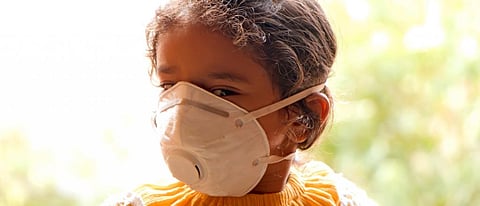Delhi battles for clear skies and lungs
Winter is nearly here and we in Delhi are waiting not to exhale, as the cold heavier air will settle and air pollution will choke us. But with a difference — there is outrage and there is action. There is even evidence that we have bent the pollution curve — though not enough, it does suggest that action is beginning to have an impact.
This is what we need. I say this because often, in our combined anger, we forget to stay focused on the need to act, and in a way that we can see the difference, so that we can do more. This is critical. As only when we remain focused on what we must do, can we get our non-negotiable right to breathe.
So, what has happened. First, there is public information about the state of air quality and its link to our health. Some years ago, government brought in the air quality index (AQI), in which, we were told, at each level of pollution its impact on our health. Then, we have a large number of air quality monitoring stations providing real-time information.
This knowledge, available on a breath to breath basis, is on our phones, in our face. We know when it is toxic to breathe. We know and we are angry. Let’s also be clear, this network of stations does not exist in any other part of the country — most cities have one or two monitors, and so they don’t know. But in Delhi, toxic air has become a political issue — almost a tug of war between different parties vying for credit. This is great.
Two, there is action. Over the past few years, much has been done — from the introduction of the much cleaner BS VI fuel ahead of schedule to the closing of coal-based power plants to the fact that today all use of pet coke, furnace oil and even coal in Delhi has been completely banned for industrial use. This is good, but not enough. Delhi needs a complete transition to clean fuel — gas or electricity.
Diesel car sales are down, partly because of the government policy to reduce the price differential between diesel and petrol. And partly because courts have come down heavily on these vehicles, mandating age limits and, in general, making people aware of the toxicity of this fuel.
A few years ago, the Supreme Court put the first congestion charge to deter trucks from traversing through the city, spewing pollutants. This year this step will fructify. The eastern and western expressways designed for heavy-duty traffic to bypass the city, have been finally made operational.
Then entry points into the city have been made cashless, using RFID technology, and this means deterrence will be effective. The number of trucks entering will reduce, as will pollution. We now need to supplement this with public transport augmentation at a scale that will take us all out of private vehicles. Right now, this is not happening.
More has been done. But what is important is that these steps are showing up in numbers. My colleagues have analysed decadal air quality data and they find the following.
One, the periodicity of the smog period is getting shorter — it is starting later and ending earlier. Two, data from air quality stations that have been operational for the past eight years or so, for which there is comparative data, show a downward trend — close to 25 per cent decline in the past three years, as compared to the previous three-year period.
This is corroborated by data from all stations as well. This is good news. Now the bad news: there is a decline, but it is not good enough. We need to reduce another 65 per cent to get air of the quality we deserve.
It also means that we have run out of small options — the first- and second-generation reforms are done. And, with all this done, we still have a huge distance to go. The transition to clean air requires massive change in the way we burn fuel.
All coal use must be banned or enforcement of pollution from this dirty fuel stepped up big time. We must reduce the number of vehicles on the road by investing in buses, metros, cycling tracks and safe pavements for walking. We must also replace the older vehicles with BS VI, at least the more polluting varieties.
But all this will not add up until we address local sources of pollution — simply burning garbage, dust and smoke from all cooking sources and the rest. These are difficult to control unless we have effective ground level enforcement, or we have alternatives that can be used.
Plastic and other industrial and household garbage has to be segregated, collected and processed so that it is not dumped and burnt. But local enforcement is the weakest link in the anti-pollution fight. But let’s stay focused — engaged and outraged. We will win this battle for our blue skies and clear lungs.
(This is part of Down To Earth's print edition dated October 16-31, 2019)


